
This revelation suggested to me something about the way we all enjoy paintings. In fact, they don’t take very long to enjoy – and for the most part they don’t take very long to understand either. Unlike literature and music, a painting has no necessary timeline. We enjoy paintings in silence too and, very importantly, there are no words.
This for me is one of the principle attributes of looking at paintings: they provide a rest from words. Today, with more demands on our time than ever before, it is important to empty our thoughts of words and just rest in something visual. Of course, there is a great deal we can learn about a picture’s historical context and its place within the context of an artist’s career, but I’m just talking here about the direct visual experience of seeing an artwork in a museum – the act of looking at pictures.
So, what is going on when we look at a painting? And why is it that we can enjoy them with such temporal brevity? Most paintings are pretty much understood in one go: what you see is what you get. The artist has prepared what you are seeing, with care and intelligence, so that the subject is easily recognisable and understood. If it wasn’t like this, the artist might be said to have “failed” in the traditional sense.
This story is from the November 2020 edition of Artists & Illustrators.
Start your 7-day Magzter GOLD free trial to access thousands of curated premium stories, and 8,500+ magazines and newspapers.
Already a subscriber ? Sign In
This story is from the November 2020 edition of Artists & Illustrators.
Start your 7-day Magzter GOLD free trial to access thousands of curated premium stories, and 8,500+ magazines and newspapers.
Already a subscriber? Sign In

Still life IN 3 HOURS
Former BP Portrait Award runner-up FELICIA FORTE guides you through a simple, structured approach to painting alla prima that tackles dark, average and light colours in turn
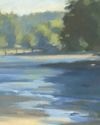
Movement in composition
Through an analysis of three masterworks, landscape painter and noted author MITCHELL ALBALA shows how you can animate landscape composition with movement
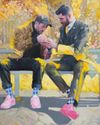
Shane Berkery
The Irish-Japanese artist talks to REBECCA BRADBURY about the innovative concepts and original colour combinations he brings to his figurative oil paintings from his Dublin garden studio
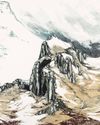
The Working Artist
Something old, something new... Our columnist LAURA BOSWELL has expert advice for balancing fresh ideas with completing half-finished work
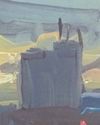
Washes AND GLAZES
Art Academy’s ROB PEPPER introduces an in-depth guide to incorporating various techniques into your next masterpiece. Artwork by STAN MILLER, CHRIS ROBINSON and MICHELE ILLING

Hands
LAURA SMITH continues her new four-part series, which encourages you to draw elements of old master paintings, and this month’s focus is on capturing hands

Vincent van Gogh
To celebrate The Courtauld’s forthcoming landmark display of the troubled Dutch master’s self-portraits, STEVE PILL looks at the stories behind 10 of the most dramatic works on display
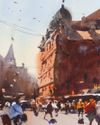
BRING THE drama
Join international watercolour maestro ALVARO CASTAGNET in London’s West End to paint a dramatic street scene
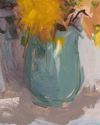
Serena Rowe
The Scottish painter tells STEVE PILL why time is precious, why emotional responses to colour are useful, and how she finds focus every day with the help of her studio wall
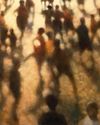
Bill Jacklin
Chatting over Zoom as he recovers from appendicitis, the Royal Academician tells STEVE PILL about classic scrapes in New York and his recent experiments with illustration